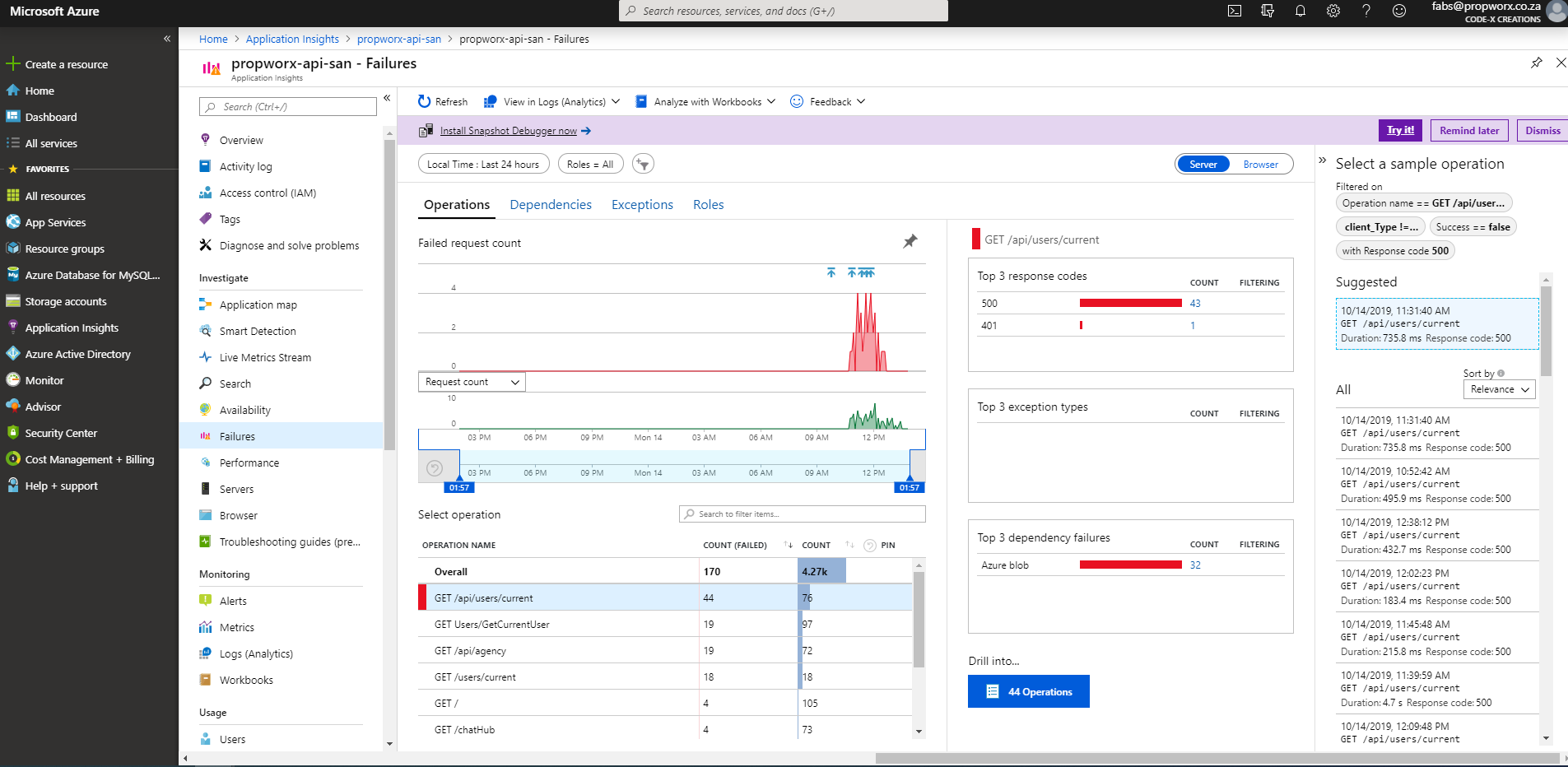If you are not seeing the stack trace you have to make sure your code logs the exceptions in one of the ways described in here:
https://learn.microsoft.com/en-us/azure/azure-monitor/app/asp-net-exceptions#exceptions
in MVC you have to use this:
public override void OnException(ExceptionContext filterContext)
{
if (filterContext != null && filterContext.HttpContext != null && filterContext.Exception != null)
{
//If customError is Off, then AI HTTPModule will report the exception
if (filterContext.HttpContext.IsCustomErrorEnabled)
{ //or reuse instance (recommended!). see note above
var ai = new TelemetryClient();
ai.TrackException(filterContext.Exception);
}
}
base.OnException(filterContext);
}
in .net core it is done at the configureservice level:
public void ConfigureServices(IServiceCollection services)
{
Microsoft.ApplicationInsights.AspNetCore.Extensions.ApplicationInsightsServiceOptions aiOptions
= new Microsoft.ApplicationInsights.AspNetCore.Extensions.ApplicationInsightsServiceOptions();
// Disables adaptive sampling.
aiOptions.EnableAdaptiveSampling = false;
// Disables QuickPulse (Live Metrics stream).
aiOptions.EnableQuickPulseMetricStream = false;
services.AddApplicationInsightsTelemetry(aiOptions);
}
as described in here:
https://learn.microsoft.com/en-us/azure/azure-monitor/app/asp-net-core


